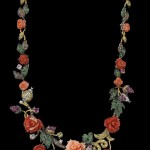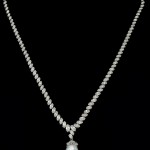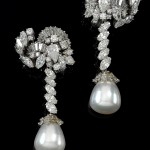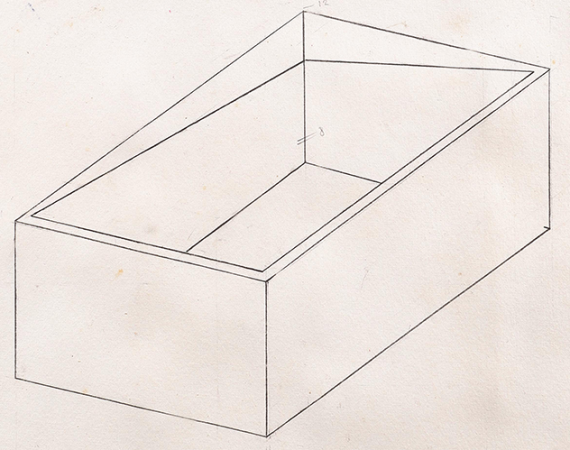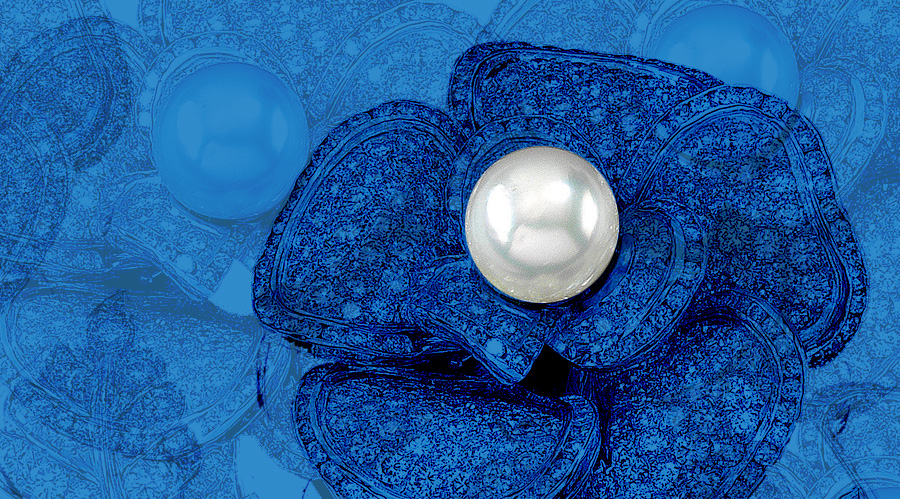
Corals and pearls, treasures from the sea. They are found in the depths of the ocean or in barren waters, and often cover long distances before being made into jewellery. A conversation with Vera Hammer, head of the Mineral Collection at the Natural History Museum, about corals and pearls, which grace royal insignia and delicate pieces of jewellery.
Countless myths and legends are closely associated with the imagined development of corals and pearls.
When Perseus, son of Zeus, cut off serpent-headed gorgon Medusa’s head, drops of blood splashed into the sea and hardened into corals. That explains the colour of red coral, or Corallium rubrum.
In another story, an Indian princess wept copiously over unrequited love and her tears dropped into the sea, where they hardened into beautiful pearls. This passion is reflected by the lustre of pearls, and so the pearl is not just a sign of love, but also stands for purity and beauty. As their shimmer and lustre is natural, pearls were long considered more valuable than many precious gemstones, whose true beauty can only emerge after skilful cutting.
In “Metamorphoses”, Ovid categorised corals as plants, while Pliny the Elder classifies them as minerals in his work “Naturalis historia”. Both of them were wrong. Corals and pearls, which grace royal insignia and jewellery around the world, are members of the animal world, explains Vera Hammer, head of the Mineral Collection and the State Gem Institute at the Natural History Museum in Vienna. “Corals can only develop and grow in sea water. They have always been made into amulets due to their colour. That alone makes them exotic. Pearls have been known in our part of the world for just as long. Salt water pearls reached Europe from the Orient, but freshwater pearls were available in Bavaria and Upper Austria in the Early Middle Ages. They were used to decorate clothing or made into simple jewellery”, explains Vera Hammer. “Both corals and pearls are made from calcium carbonate (CaCO3), a highly important structural substance for invertebrates. Unlike coral stocks, pearls are always the random product of the secretions of a shell due to irritation.”
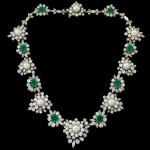
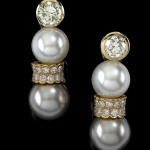
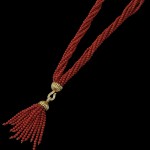
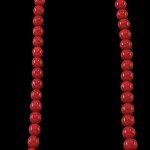
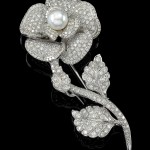
What makes these treasures from the sea even more fascinating is the wide range of colours that nature brings out in them. The colours of corals range from off-white to deep red, while pearls can be any shade from a blue shade of white to champagne nuances and even grey-black tones. What are the substances that create these colours? “As long as there has been no artificial colour manipulation, the natural substance that gives red corals their colour is carotenoid. In pearls, there is a physical effect: extremely thin layers of aragonite bend the incoming light and thereby split it into different colours. Depending on how thick or thin these layers are, and on the shell producing the pearl, this results in different hues and different shimmer effects, which are referred to as lustre”, says Vera Hammer.
But this wonderful shimmer of a pearl can quite easily be irrevocably destroyed. Perfumes, lotions and body sprays corrode their surface and destroy the lustre. It is therefore rare to find pearls in historic jewellery that are still in good condition, and they are correspondingly expensive. If these pearls are natural ones from the seas, referred to as orient pearls, or freshwater pearls from rivers, such jewellery can reach peak prices at international auction.
In the early 20th century, Japanese entrepreneur Kokichi Mikimoto succeeded in producing high-quality cultured pearls on pearl farms and bringing them to market. Today, the cultivation of pearls plays an essential role on the global pearl market. Pearls can be cultivated in salt water and in freshwater. Nobody has managed to grow corals with such procedures.
The appeal of corals and pearls remains unbroken today. They are used to adorn jewellery and made into chains. The smoother, larger and more even the pearl, the higher its price. Colour and lustre are also important.
Jewellery with pearls and corals is a true classic and a real must-have – worn with a little black dress or, casually, on a long necklace with a sporty outfit. The options are as manifold as the variety of appearances of these exceptional sea dwellers.
(This article was published in myART MAGAZINE no. 05/2015)
Jewellery Auction
11th June 2015, 6 pm
Palais Dorotheum Vienna
Click here to browse the online catalogue.

